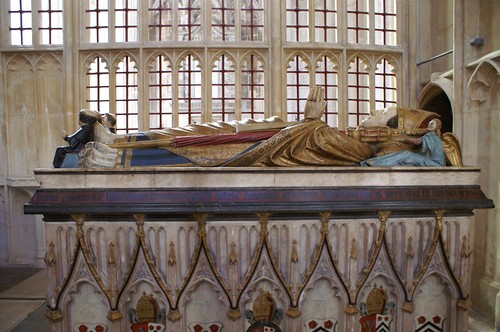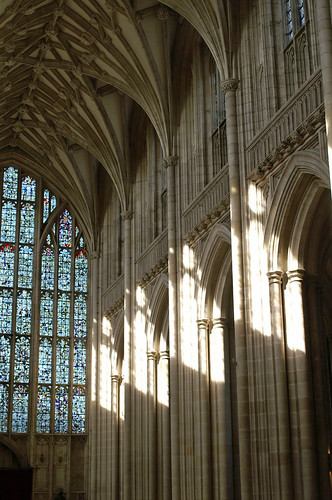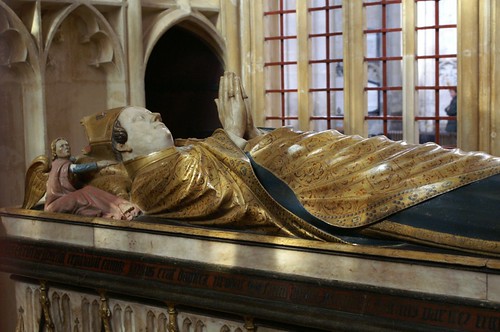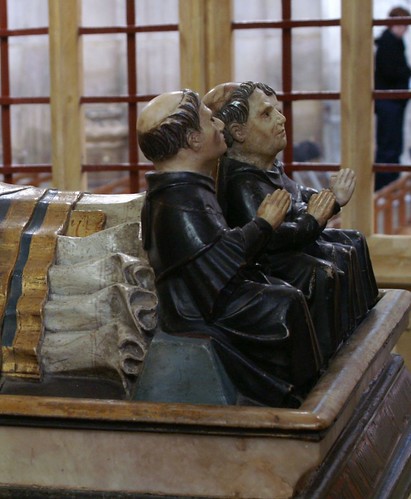The Tomb of William of Wykeham in Winchester Cathedral

William of Wykeham was born in Wykeham near Southampton in 1324, the son of a yeoman. For the twenty years of his career he served as a secular civil servant, entering the royal service, for a time he was secretary to the constable of Winchester Castle. He was ordained in 1362 at the age of 38 and the next year was appointed Lord Privy Seal to Edward III. He then quickly rose up in the world and in 1366 he was elected Bishop of Winchester and in 1367 became Chancellor of England. At that time the see of Winchester was the richest in England and he was able to apply the revenues of the see to good works including the foundation of Winchester College and New College Oxford. He remained bishop of Winchester until his death in 1404.
During his early royal service he had managed building projects, including work at Windsor Castle, so when he came to Winchester he inevitably turned his hand and some the vast wealth of his see to building work. William of Edington, his predecessor, had started reconstructing the Norman nave of Winchester Cathedral in the Perpendicular style and Wykeham continued the building scheme.

Into the south nave arcade Wykeham incorporated an elaborate open-work chantry chapel that rises to the level of Triforium. The chantry was constructed on the site of an altar dedicated to the Virgin Mary, where as a boy Wykeham had served the mass of the priest Richard Pekis. The chantry was completed, along with the rest of the nave, in 1403, the year before Wykeham died.

Inside the chapel he placed a glorious alabaster tomb chest decorated with shields of arms and with a polychromed recumbent effigy of himself in full pontificals on the top.

At the feet of Wykeham are placed three figures of praying Benedictine monks. In his will Wykeham provided revenue for three monks from the cathedral priory to celebrate three masses in his chapel on a daily basis and presumably the figures are a reference to that provision.

Altogether the nave, chantry and tomb of Wykeham are a wonderful example of a unified scheme of late medieval memorialisation.
Comments
Would be wonderful to see it statues intact tho', wouldn't it?
He is also responsible for protecting Winchester college which is why the statue above the gate of Mary still exists - an extreme rarity.
Boulay